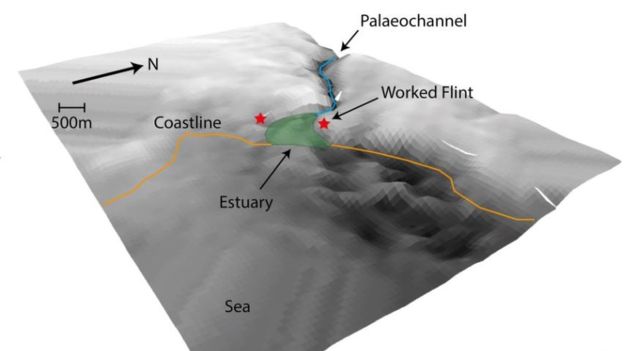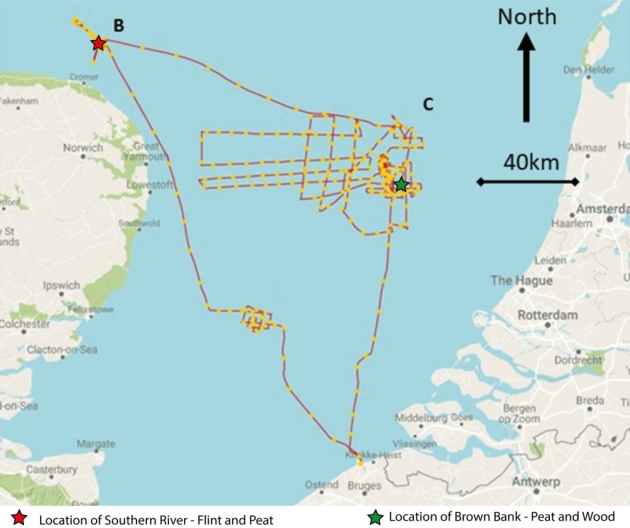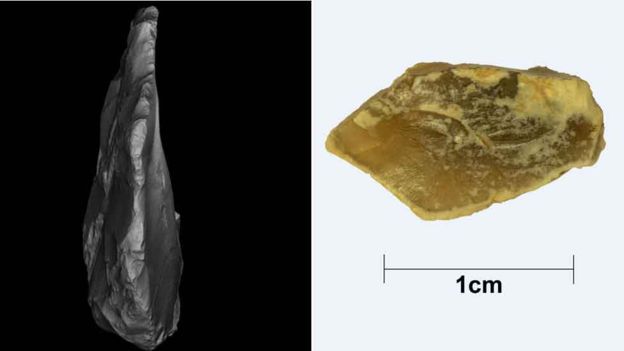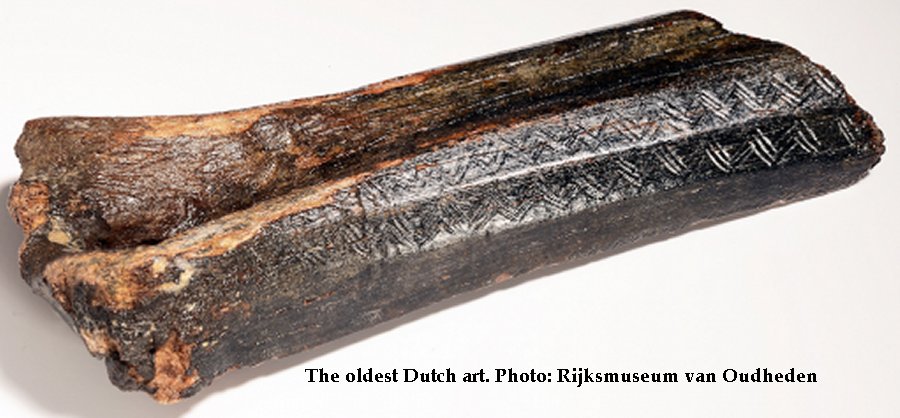The first artefacts to emerge from the depths of the North Sea in the current research into what the sediments on the sea bed might be hiding. Not particularly exciting by themselves as they consist of flakes of flint and a splinter from a hammer stone. It is thought they come from a Mesolithic tool making site and must date prior to 6200BC (when the southern basin of the North Sea was drowned). See for example https://archaeologynewsnetwork.blogspot.com/2019/06/first-archaeological… … or the report by David Keys at www.independent.co.uk/news/uk/home-news/atlantis-britain-stone-age-north… … scientists have found evidence of human activity on Britain's own 'Atlantis' – the drowned Mesolithic landscape of Doggerland. Two items have been found and are being sold as pointing towards two separate possible camp sites (even settlement sites has been aired) dating back to the early Holocene. Pollen grains from sediments suggest there was a variety of landscape the people could have exploited, from marshland with reed beds, inter tidal mud flats, and gravel beaches, salt marsh grassland, and large swathes of dry land with trees and shrubs such as hazel. Geophysicists have detected a river valley and estuary situation and undulating chalk topography. Archaeologists are using a mini submarine with robotic arms and geophys equipment …



the wider ambition of the project (a joint endeavour between UK and Belgian researchers) is two pronged. The ultimate aim is to reconstruct Quarternary hisoty in the southern North Sea basin – spanning 500,000 years.
The same area, known, as Brown Bank (where one of the artefacts was found), was the scene of finds dredged up from the sea as reported in 2018 – go to www.ancientpages.com/2018/02/14/spectacular-finds-discovered-at-the-bott…
-old/ … finds discovered by fishermen were taken to Dutch archaeologists to be assessed. One is a fairly big piece of bison bone covered with zig zag and herring bone motifs reminiscent to those on the Shigir Idol (in Siberia) and on megaliths in the UK (many thousands of years later). The other find was a fragment of a skull (known as the old Dutchman). We also learn that in the past many finds from the North Sea (usually found by trawlers) were discarded by archaeologists because they lacked context.

